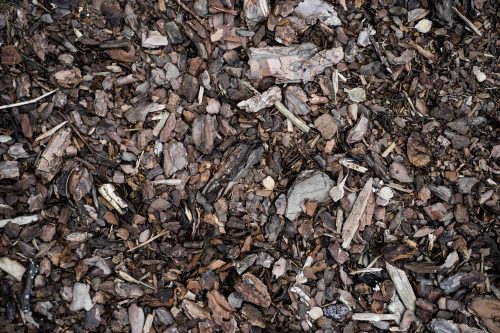How to put down bark mulch effectively: Tips and techniques
There are many advantages to adding bark mulch to your garden, but its effectiveness depends on the way it’s applied
There are many advantages to adding bark mulch to your garden, but its effectiveness depends on the way it’s applied.
When it comes to low maintenance, organic mulch is a gardener’s best friend because it promotes plant growth and acts as a weed suppressant.
However, to achieve fantastic results, you need to ensure that it’s used correctly.
To help you maximise all those brilliant benefits, we’ll provide the lowdown on how to apply bark mulch.
What is bark mulch?
Mulch is material that’s been spread over soil to a depth of at least 5cm (2in).
It’s used to provide protection, reduce water loss, and help improve the quality of the ground beneath.
There are different types of mulch, some organic and others non-organic.
Bark mulch is classified as the latter because it can be decomposed by bacteria or micro-organisms, and unlike non-organic protection, it will eventually break down completely.
What is bark mulch used for?
There are several reasons why you should invest in bark mulch for your garden.
Like humans, plants thrive on nutrients.
The three that are key to helping them grow can be found in the soil, and they are: nitrogen, phosphorus and potassium.
Carbon, oxygen, and hydrogen are absorbed from the air.
To ensure reach their full potential you can add magnesium, calcium, and sulphur to the mix.
As we all know, gardens can be contrary things. Some types of soil are better than others, while plants in pots and planters need an additional boost.
With that in mind, while most garden soils contain enough nutrients to promote healthy growth, you can help them along with the addition of bark mulch.
This will not only ensure that these are maintained, but will also help improve the structure of the soil.
Bark mulch is great for:
- Helping the soil to retain moisture
- Reducing the need for watering
- Suppressing weeds
- As a pest deterrent
- Protecting roots from ice in the winter and heat in the summer
- Warming up soil
- Aesthetic appeal
When is the best time to lay bark mulch?
Ideally, the best time to apply bark mulch is at the start of the growing season, from mid to late spring, when everything is just waking up - weeds have yet to germinate, and herbaceous plants are dormant.
Autumn is also a good time to lay bark mulch when plants are dying back. However, you don’t have to stick to a timetable given most new plants will feel the benefits of weed suppression and soil retention all year around.
Choosing the right type of bark mulch
This depends upon what you want the bark to do; do you want it for soil health, or do you want it primarily for decorative purposes?
For vegetable gardens, flower beds, shrubs, and trees
Composted bark is a great choice. It has a fine dark appearance and can easily be broken down, making it perfect for injecting much-needed nutrients into the soil, as well as improving its structure and retaining moisture.
For safety
Play bark is the one to choose if you’re using bark mulch on a children’s play area or a pathway because it’s soft and rounded and is certified play safe.
For pots and small borders
Pine bark nuggets are great for smaller planted areas and pots because they’re larger and chunkier, making them slower to decompose. They’ll add nutrients to the soil and help with water retention.
Preparing your garden for mulching
How to apply bark mulch? First, you must clear weeds from the area.
You also need to ensure the soil is moist underneath. If it isn’t, you need to give it a good soak before you add the mulch.
A brief guide to applying bark mulch
- Fill up a wheelbarrow with the mulch of your choice, then spread it at least 5cm (2in) and ideally 7.5cm (3in) deep. You can layer it around plants, or apply it using a spade, but ensure there’s a small gap around the stems of plants
- Beware of using too much mulch in flower beds as this can smother small plants
- Beds and borders can be mulched entirely, but take care not to pile up mulch into what has been described as a “mulch volcano.” This is when a gardener piles mulch up against the trunks of trees and shrubs in a pyramid shape. This results in tree roots being constantly moist, which risks encouraging decay.
- Finally, rake the mulch so it’s levelled out.
Premier garden products from Forward Builders’ Supplies
Are you seeking that missing something for your garden project?
Our comprehensive range of growing compost, decorative aggregates, and landscape bark is sure to include what you’re looking for.
Unsure what you need, or want to ask a question?
Send an email to hello@forwardbs.co.uk or give us a call by dialling 0151 357 1035.
Alternatively, complete our online contact form and a team member will reply as soon as possible.










The information below is required for social login
Login
Register
Fill in the form below to create your new account